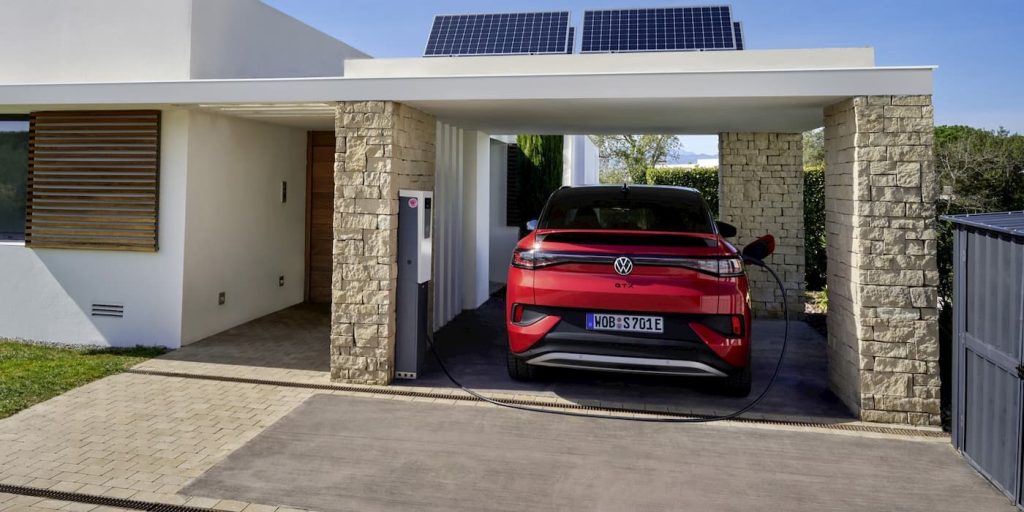
We have the latest scoop on VW’s new tech. After introducing V2G capabilities for its EVs, including the ID.4, Volkswagen has given Electrek new details.
Volkswagen revealed that V2G was finally possible on its electric models, including the ID.4 Thursday.
The company has been promising to introduce the tech for several years. Initial plans called for Volkswagen EVs to support V2G last year, but software hurdles delayed it.
VW said this week that from now on, many of its ID electric models will offer bidirectional charging with V2H capabilities. The company said with a home power station and integrated Home Energy Management System (HEMS), VW EV drivers can help cover energy use at home.
With smart algorithms, drivers can charge their EVs when there is abundant clean energy, such as solar or wind.
The energy can be stored in the EV battery and used to power a home through V2H. It will also support V2G to promote a healthy grid in the future.

Volkswagen said ID models with the 77 kWh battery will have access to V2G. The company also said it could activate the function in already delivered EVs with its ID Software 3.5 update.
Despite this, VW was fairly light on the details. After reaching out, the company gave Electrek all the info.
Volkswagen provides new details on EVs with V2G
After VW’s press release left us with more questions than answers, a spokesperson from the company confirmed to Electrek that there will be a software update for older models to support V2G.

All current VW models will get the Software Version 3.5 (or higher), giving them the function. VW with the 77 kWh battery includes the ID.4 Pro, ID.4 Pro S, ID.4 Pro AWD, and ID.4 Pro S AWD.
Volkswagen says the discharge speed will be an impressive 10 kW. In comparison, Ford’s F-150 Lightning provides up to 9.6 kW of power through its Intelligent Backup Power capabilities.
The capabilities allow owners to power their homes for about two days, according to VW (assuming 30 kWh average consumption).

The system will operate through the vehicle’s charge point. For now, it’s only available in Germany with HagerEnergy’s DC home power system.
VW said the company will reveal other home power stations, like the Wallbox Quasar, at a later date.
Electrek’s Take
Although there are concerns that the rising number of EVs will stress the grid, they can actually help it.
EVs with bidirectional capabilities can store energy, feeding it back into the home (or grid) during peak energy use. This can help owners save on utility costs while supporting a healthy grid.
Combined with renewable energy, the technology can help accelerate the shift from fossil fuels.
Many automakers are moving to introduce the technology, including Hyundai, Kia, Ford, and Nissan. Most recently, Tesla introduced the feature on its Cybertruck.
Author: Peter Johnson
Source: Electrek



